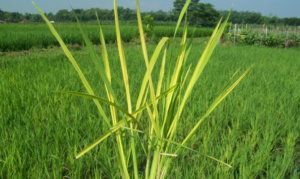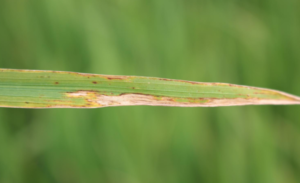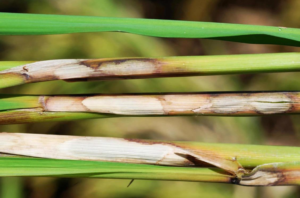RICE BLAST DISEASE:
Causal Organism= Pyricularia oryzae cavara
Symptoms=
· The rice blast disease fungus may attack the crop at all level of crop development.
· These symptoms appear on leaves, nodes, rachis, and glumes.
· Minute brown specks on the leaves that grown to become larger brown spots.
· Orange- yellow tips on older leaves that extend down to the lower leaf portion.
· Stunted growth can be reduced tillering.
· White to Gray-green spots with darker borders produced on all parts of the shoot.
· Spots that may be enlarge and coalesce to kill the entire leaf.
· Spots that are usually 1-1.5cm long and 0.3-0.5cm wide.
· The pathogen cause yield losses ranging from 30-61% depending upon the stages of infection.
· On the basis of site of attack blast disease my be classified into four types:
a) Nodal blast:
o Because of the infection of the nodes of tillers, the colour of nodes is turn into black
All the plant parts above the affected node dry. As a result, infected plants produce sterile panicles.
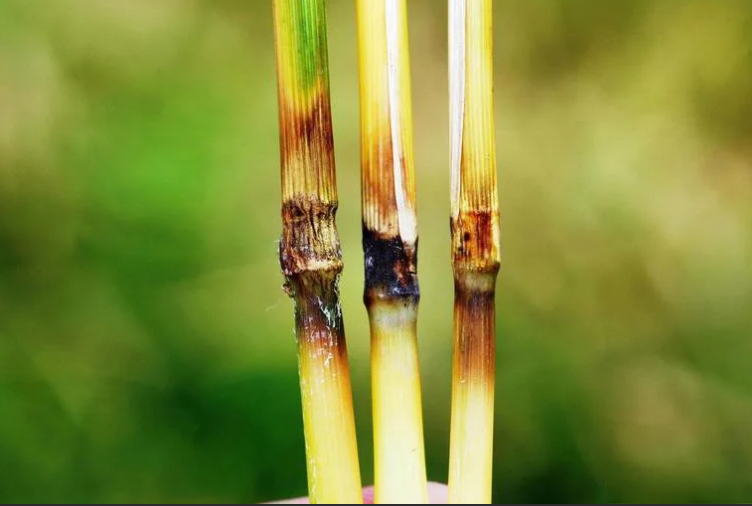
a) Neck blast:
Due to rotting of the tissue, the neck region of the emerging panicle turns black and translocation of food to the developing grains is hampered which results in production of chaffy grain.
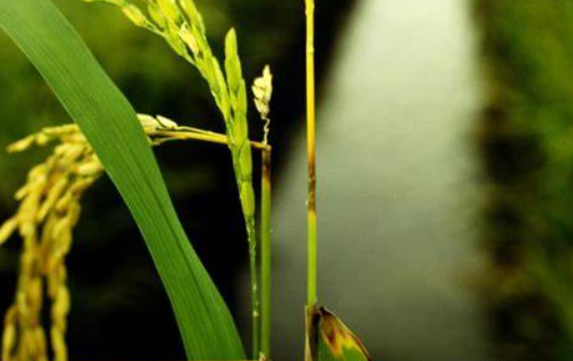
a) Leaf blast:
o These spots on the leaves are spindle shaped and their end are pointed.
o The centre of spots is greyish white in colour.
The spots jointed together covering a large portion of the leaf which gives burning appearance.
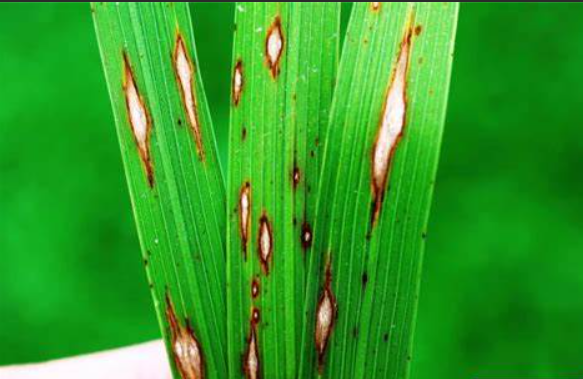
a) Collar blast:
o This seen at the flag leaf.
Collar blast will lead to drooping of leaf blade
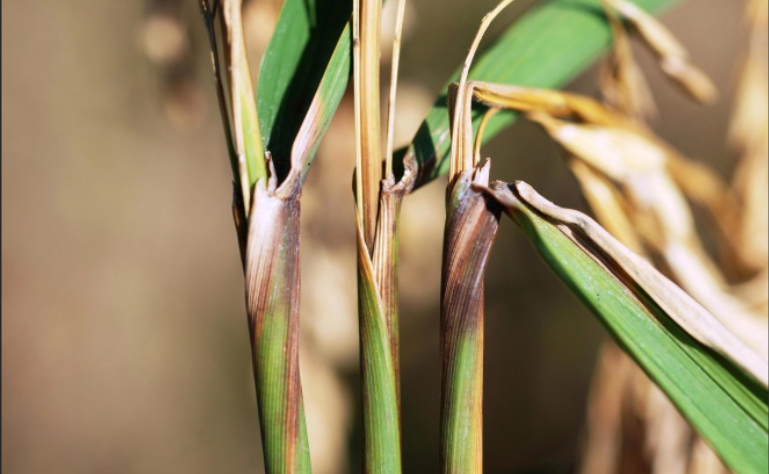
Favourable condition=
· Low night temperature: 15-20 degree.
· Relative humidity: 93-99%
· Availability of collateral hosts and excess doses of nitrogen.
Disease cycle=
Perennation:
· Through plant host and plant debris present in the soil.
Primary infection:
· Through air borne conidia since spore of the fungus present throughout the year.
Secondary infection:
· Through water, air and soil
Diagram of blast disease cycle=

Management=
Culture method
· Remove plant debris and weed host before field preparation.
· Grow resistant varieties:CO47, IR 20, ADT 36 or 39, ASD 18, IR 26 etc.
· Maintain proper moisture in the field.
· Avoid water logging condition.
· Use proper deranged application in the field.
· Proper sanitation application applies in the field. E.g.: soil solarization.
· Proper spacing maintain row to row and plant to plant.
· Remove infarcted part of the plant.
· Apply good weed management practices.
· Apply good irrigation application in the filed area.
Chemical method
· Spray the main field with Edifenphos 500ml. or Carbendazim 500g or Tricyclazole 500g or Iprobenphos (IBP) 500G/ha.
· Seeds treat with Captan or Thiram or Carbendazim or Tricyclazole at 2kg/kg. or Pseudomonas fluorescens@10g/kg of seed.
· Spray the nursery with carbendazim 500mg/L or tricyclazole 300mg/L

